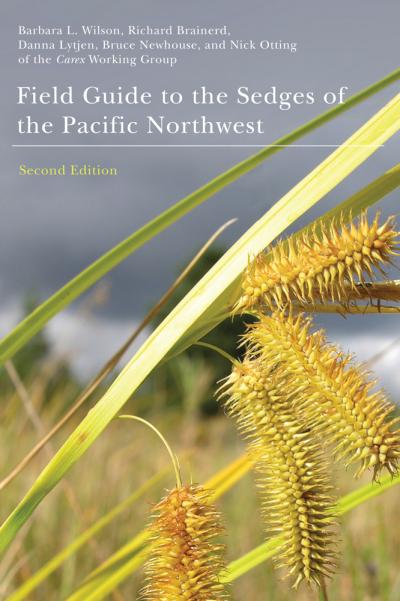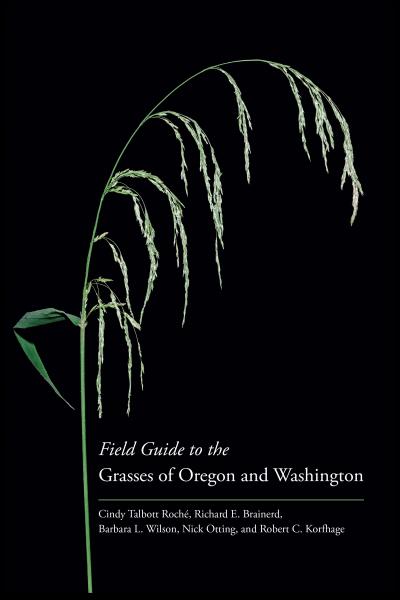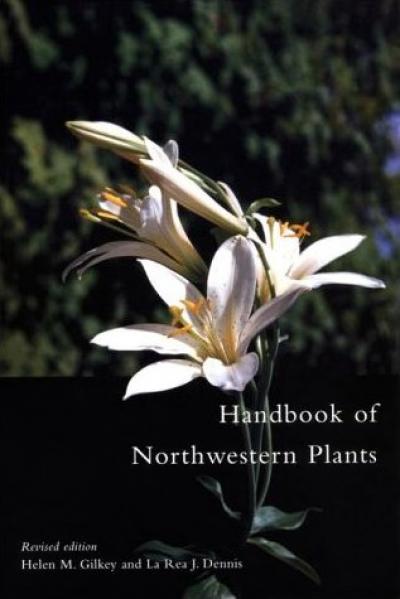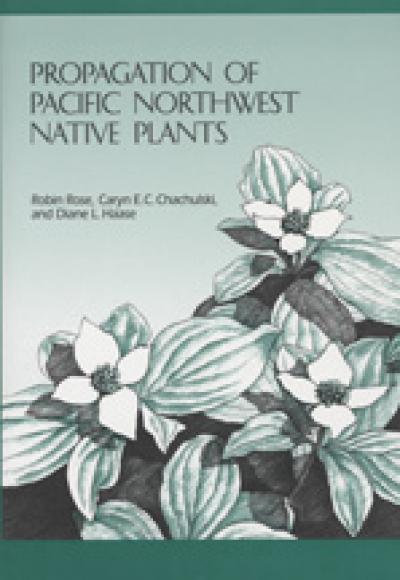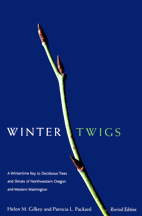
Winter Twigs
Patricia L. Packard and Helen M. Gilkey
Winter Twigs has long been respected and widely used as a unique guide for wintertime identification of the deciduous plants of northwestern Oregon and western Washington (many of the species covered are also found in British Columbia and Alaska). The first edition of this book has been used by thousands of botany students and other interested individuals to identify plants during the months that they lack the leaves and flowers that most field guides rely on.
Intended for use by teachers, students, scientists, amateur botanists, and outdoor enthusiasts, Winter Twigs brings together in one convenient volume the information necessary to identify all of the native deciduous woody plants likely to be encountered in the region, as well as many of the more common escaped cultivated species, Also included are certain species which are normally evergreen but may be deciduous during severe winters.
Covered are 82 species representing 35 genera of 17 plant families likely to be found between the Cascade mountains and Pacific Coast in Washington and Oregon as far south as the Umpqua divide, and keys to all species that can be readily identified by winter characteristics. The glossary of botanical terms and more than 100 line drawings that highlight the identifying features of various plants will be especially valuable to students and beginners.
To make this new edition as accurate and up-to-date as possible, the nomenclature for 22 species has been updated to conform to the latest scientific literature, with contributions by the Oregon Vascular Plant Checklist Project.
About the author
Patricia L. Packard, a former student of Prof. Gilkey, was Professor of Biology at Albertson College of Idaho for 29 years, as well as the first holder of the Orma J. Smith-Lyle M. Stanford Chair in Biology.
Read more about this author
Helen M. Gilkey (1886-1972) was a vascular plant taxonomist, mycologist, botanical illustrator and author of numerous publications. She was curator of the herbarium at Oregon State from 1918 to 1951; following her retirement she continued to do research until her death.
Read more about this author
A Warning
Preface
Limits of the area and vegetative distribution
Introduction
Characters Used in Identification
Twigs and buds
Leaf scars and bundle scars
Arrangement of Buds
Bud scales and bud scars
The pith
Phyllotaxy
Description of the Key
How to use the key
The Diagnostic Key
Description of Plant Families, Genera, and Species
Glossary
Index
The logical time of year to become acquainted with deciduous trees and shrubs — that is, those which normally drop their leaves in autumn — would seem to be spring or summer when they are readily recognizable by their flowers and fruits. But winter is far from the sterile season which it superficially appears. In fact, we may find the most stimulating conditions for such study since our ingenuity is pitted against more subtle characters, but just as definite indicators, of a plant's identity as are blossoms and seed pods.
When winter woods are leafless and bare,
And Nature is stripped of her splendor;
When twigs and branchlets stand out 'gainst the sky
Graceful and dark and slender…
Winter characters of deciduous woody plants test and develop one's powers of observation in the field. The habit of growth of a tree or shrub includes its typical height, spread, and contour, as determined by its type of branching; and these characteristics constitute an important first observation. The bark records its signature, as it were, and by the expert woodsman can clearly be read. In winter, too, remains of former flower clusters and seed cases may still, here and there, be found in position; while the ground beneath should yield valuable hints in the fallen leaves — weathered and perhaps skeletonized but still identifiable — and whatever portions of fruits may have survived the elements.
But the twigs, themselves, though denuded, generally offer sufficient information for accurate identification; and upon them the accompanying key is based. In it, technical terms are reduced to a minimum, but are employed in cases where they best serve a need. A glossary in which all such words here used are defined is provided in the back of this manual; and it is recommended that it be freely used. In passing, it should be noted that, in order to avoid constant repetition, the term "woody plants" may frequently be substituted in these pages for "trees and shrubs."
Following is a discussion of the characters most commonly used in the key.
Characters Used in Identification
Twigs and Buds
A twig is a terminal portion of a main stem or a branch, and constitutes the growth of from one year to several years. Typically, at the tip, a twig bears a terminal bud (exceptions will be noted later); while on the sides of the twig are borne the lateral buds. The place on the stem where a typical lateral bud is located is called a node, the portion of stem between any two nodes being an internode.
Functionally, the buds of woody plants are of two main kinds commonly called leaf buds and flower buds. the term "leaf bud" is somewhat of a misnomer since it produces not a leaf alone, but a leafy twig (shoot) similar to the one which bore it. Thus the leaf bud contains rudiments of both leaves and stem.
Positionally, a leaf bud may be terminal or lateral on the stem. A twig's annual increase in length normally originates with a terminal leaf bud formed at the close of the preceding growing season; while its branches develop from last year's lateral leaf buds. This a branch is usually a year younger than its parent shoot. In exceptional cases, however, of which Chittim Rhamnus purshiana) is one, an occasional branch may grow from the axil of a rudimentary leaf within the terminal bud, the shoot and its branch therefore developing concurrently.
A flower bud contains an embryonic flower or inflorescence and, consequently, fruit; and here, too, a portion of stem is involved. Flower buds, also, may be either terminal or lateral or both.
A third kind of bud, which in reality is a composite of the other two, is sometimes found. This is the mixed bud, which bears rudiments of both leaves and flowers, as well as stem. An example is the large terminal bud of Big-leaf Maple (Acer macrophyllum) from which emerges a raceme of flowers and short leafy continuation of the stem.
During the course of typical growth in woody plants when, by the end of a season, a terminal bud has been formed, increase in length of that twig for the current year automatically stops, sealed off, as it were, by the presence of the bud. This is called determinate growth. In certain trees and shrubs, however, notably Willow (Salix) and Western Huckleberry (Vaccinium), growth in length continues as long as conditions remain favorable. When these cease, no terminal bud is formed but the twig dies back at the tip, leaving no heir, so to speak, to carry on the following season's extension. Because of its indefiniteness, such growth is labeled indeterminate. Often the stem dies back to the nearest lateral bud, breaking off at that point and leaving either a recognizable stem scar or merely a withered remnant. The involved lateral bud typically assumes the function of the nonexistent terminal bud, carrying on, during the subsequent growing season, a pseudo-continuation of the twig. But the stem scar or remnant reveals what actually occurred, as does a generally obvious misalignment of the twig at this point.
Leaf Scars and Bundle Scars
Leaf and bundle scars provide valuable data for winter identification of deciduous trees and shrubs; and it is logical, therefore, before discussing these, to consider briefly the organ which forms them.
A typical leaf consists of three component parts, namely: (1) a generally expanded portion called the blade; (2) a stalk known as the petiole; and (3) subtending the base of the petiole, a pair of usually small structures, the stipules. Of these, the stipules are generally the least conspicuous, though in cases — for example, certain willows and many members of the rose family — they are in evidence. Very rarely, but never in the native woody plants of our area, they predominate and take over the function of the blade. More frequently the stipules are absent or minute.
The petiole may be present or absent. If no petiole is present, the leaf is described as sessile. The blade in different species varies greatly in form; but whatever its shape, it is generally to some extent expanded and thus adapted to carry on its function of manufacturing food, in the most favorable exposure to sunlight. In exceptional cases the blade may be suppressed, the petiole substituting for it. Examples are the so-called simple-leaved acacias which are grown, particularly southward, as ornamentals. Again, however, this condition is not found in native trees or shrubs of our area.
Leaf blades may be simple (undivided) or compound (divided into leaflets); but since this condition will have little to do with winter identification of twigs, it needs no further discussion here.
In winter, beneath a lateral bud at each node is found a leaf scar. Perhaps as good a definition as any for this structure was once written in an examination paper by a freshman: "A leaf scar is a scar that a leaf leaves when the leaf falls off in the fall." Whether the growing season approaches its end in late summer, a thin layer of more or less brittle cells, the absciss layer, is formed across the base of the leaf in the area of its attachment to the stem. Here the leaf naturally becomes detached, leaving on the stem below the bud a generally clean-cut scar shaped like the base of the petiole (or of the blade, in case of a sessile leaf). Sometimes a lesser scar can be seen at each side of the leaf scar. This pair of scars remains after falling of the stipules. In some cases, however, the stipules are merged with the petiole base, and thus leave no separate scars. Examples are found in many members of the rose family.
Within the leaf scar are usually to be seen scars of the leaf veins where they became detached from the food-and-water distributing system of the stem. These scars, called bundle scars, occur generally in the form of slightly raised dots or bars, and their number is often specific for a given species. The leaf scars of many species contain respectively 3, 5, 7 bundle scars arranged in a more or less curved line. In most cases the bundle scar is simple; but in others, the bundle scars may be indefinite in number and variously arranged.
Sometimes the bundle scars are obscured by the shriveling of the leaf scar, or by the presence of a ragged margin, the latter due to an incomplete formation of the absciss layer, or to complications involved in the presence of a secondary absciss layer. In such case, the scar may not be clean-cut. Examples are found in the genus Rubus which includes blackberry, thimbleberry, salmonberry, and related species. In these cases, a thin slice of tissue should be removed by a razor, to expose the bundle scars.
Arrangement of Buds
In respect to arrangement, lateral buds may be opposite or alternate. Opposite buds occur in pairs at a node, half the circumference of the stem apart, each succeeding pair occurring at right angles to the one below.
Alternate buds are arranged spirally around the stem, with a single primary axillary bud at the node. (The alternate arrangement is sometimes called spiral.
Since each primary lateral bud is borne above a leaf scar, it is obvious that the leaves carried the same arrangement — that is, opposite or alternate. a third arrangement, which occasionally occurs in woody plants, shows several buds forming a circle at each node. This is called the whorled arrangement, but since it does not occur in native trees or shrubs of our area, it will not be discussed further here.
Alternately arranged lateral buds generally occur singly at a node. But in certain species with either alternate or opposite arrangement, extra buds (accessory or supernumerary are sometimes found at a node. These may be superposed (above the primary bud) or laterally multiple (in horizontal line with it). Both arrangements sometimes occur in Elderberry.
Bud Scales and Bud Scars
The leaf and flower rudiments in a bud may be protected by scales, in which case we find a scaly bud; or, if scales are absent and the young leaves or flowers are apparent from the first, the bud is termed naked. Naked buds are less common in temperate regions, but are present in Chittim (Rhamnus purshiana) and Poison Oak (Toxicodendron diversilobum) in our area.
In the currants and gooseberries (Ribes), in most of our native woody Rosaceous plants, and in our maples (Acer), the bud scales are modified petioles, frequently bearing leaf-blade rudiments at their tips. Stipular scales are found in native species of Ceanothus; while the scales of Alder Alnus) are entire leaf blades, retaining their identity in spite of extreme modification in structure. There is often successive transition from outer modified to inner unmodified leaves, as in Acer macrophyllum.
Obviously, due to their origin, bud scales follow the same arrangement, in any given plant, as the foliage leaves. That is, bud scales of opposite-leaved plants, such as the maples, are paired and opposite; while those of alternate-leaved Hazel, for example, are single and alternate. Extreme suppression of internodes in most buds often obscures the true arrangement, and it can be ascertained only by close examination.
Since, as we have seen, bud scales are modified leaves or parts of leaves, primitively they may bear buds in their axils. This function has been retained in some native species of Rubus, Acer, Sambucus, and other genera; but such buds generally remain rudimentary.
A few trees — for example, willows — appear to have a single scale covering each bud. In most trees, however, several to many scales are present, the outer often thick and stiff, sometimes gummy; the inner scales becoming progressively softer, and often hairy or woolly. The scales protect the delicate rudimentary structures primarily from loss of water by evaporation; also, perhaps, but to a lesser degree, from mechanical injury or from sudden sharp changes in temperature.
In most cases, as in our maples, the inner scales develop for a time with the shoot, often reaching an inch or more in length before finally falling. Such scales are said to be accrescent.
After bud scales have served their purpose, they generally become detached and drop off, leaving usually cleanly-marked scars; though, in some cases, remnants of scales may remain for several years. since the buds of most species are protected by several scales which occur in close proximity to each other, with practically no internodal elongation between them, the scars appear grouped; and since each group represents a single bed, it is called a bud scar. The term is of course somewhat erroneous because merely the scales, not the bud proper, became detached. But through long usage the term has become accepted, for want of a better.
Since the location of each so-called bud scar indicates the beginning of the following season's growth, it is obvious that the age in years of most twigs can be determined by the number of growth intervals separated by bud scars. In those woody plants which produce no terminal bud, there is of course no terminal bud scar, and age determination by this means is impossible. An example is Willow; but here the annual stem scar, usually accompanied by a misalignment of the twig at the beginning of each new season's growth, is a usable substitute.
The Pith
Characters of the pith are useful in identification. In Alder, for instance, the pith of the twig is very large in comparison with the wood. In Indian Plum (Oemleria cerasiformis), a longitudinal section of the stem reveals a somewhat rare arrangement of the pith in parallel plates. such a pith is designated lamellate or chambered. The pith of the currants and gooseberries, while not regularly lamellate, often contains noticeable spongy areas.
The shape of the pith in cross-section likewise is useful. It may be oval; 3-angled; 5-angled; or more; round; or obscure. In determining pith shape, a stem must be cut cleanly across, and examined by aid of a hand lens. A useful method is to make a this cross-sectional slice of the stem, and to place it on a dark background for examination by the lens.
Phyllotaxy
The arrangement of leaves, and consequently of leaf scars, on the twig is know as phyllotaxy. It is constant for each species and usually, also, for all species of a genus. The phyllotaxy of opposite-leaved plants is uniformly decussate, the plane of each pair being at right angles to the plane of the pair immediately above or below, bringing the leaf scars into four vertical ranks.
Alternate leaves are arranged spirally on the twig. A line drawn from one leaf scar to those successively above or below, will spiral around the stem, any two leaf scars being separated from each other by an equal portion of the circumference of the stem. This is not always obvious, since most stems twist to some degree while growing.
The two-ranked arrangement most widely distributes the leaves, the second scar being on the opposite side of the stem from the first, the third directly in line with the first. In this case, the phyllotaxy is written as 1/2, expressing the arc of portion of the circumference between two successive leaf scars. Also, the numerator equals the number of turns made around the stem by one cycle of leaf scars (one turn in this case); while the denominator expresses the number of leaf scars in each cycle, which is synonymous with the number of ranks on the stem. No woody plants in our area have this natural two-ranked arrangement; but the horizontal branches of Hazel (Corylus), by twisting of the stem to obtain full benefit of the sun on its foliage, often assume a two-ranked position.
Alder Alnus is three-ranked, one cycle of leaf scars containing three members and making one turn around the stem, the phyllotaxy thus express as 1/3. The most common arrangement is five-ranked, each cycle containing five members and making two complete turns around the stem, the phyllotaxy thus expressed as 2/5. In this case, the arc between any two successive leaf scars is two-fifths the circumference of the stem, and the sixth leaf scar is in line with the first.

